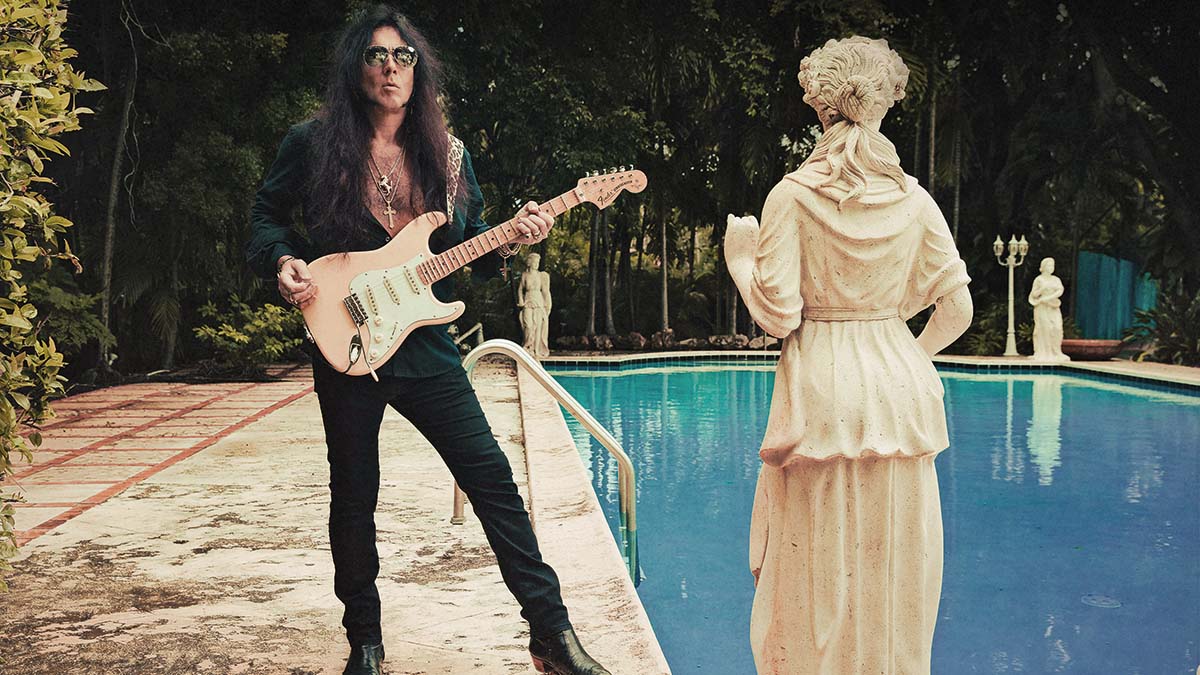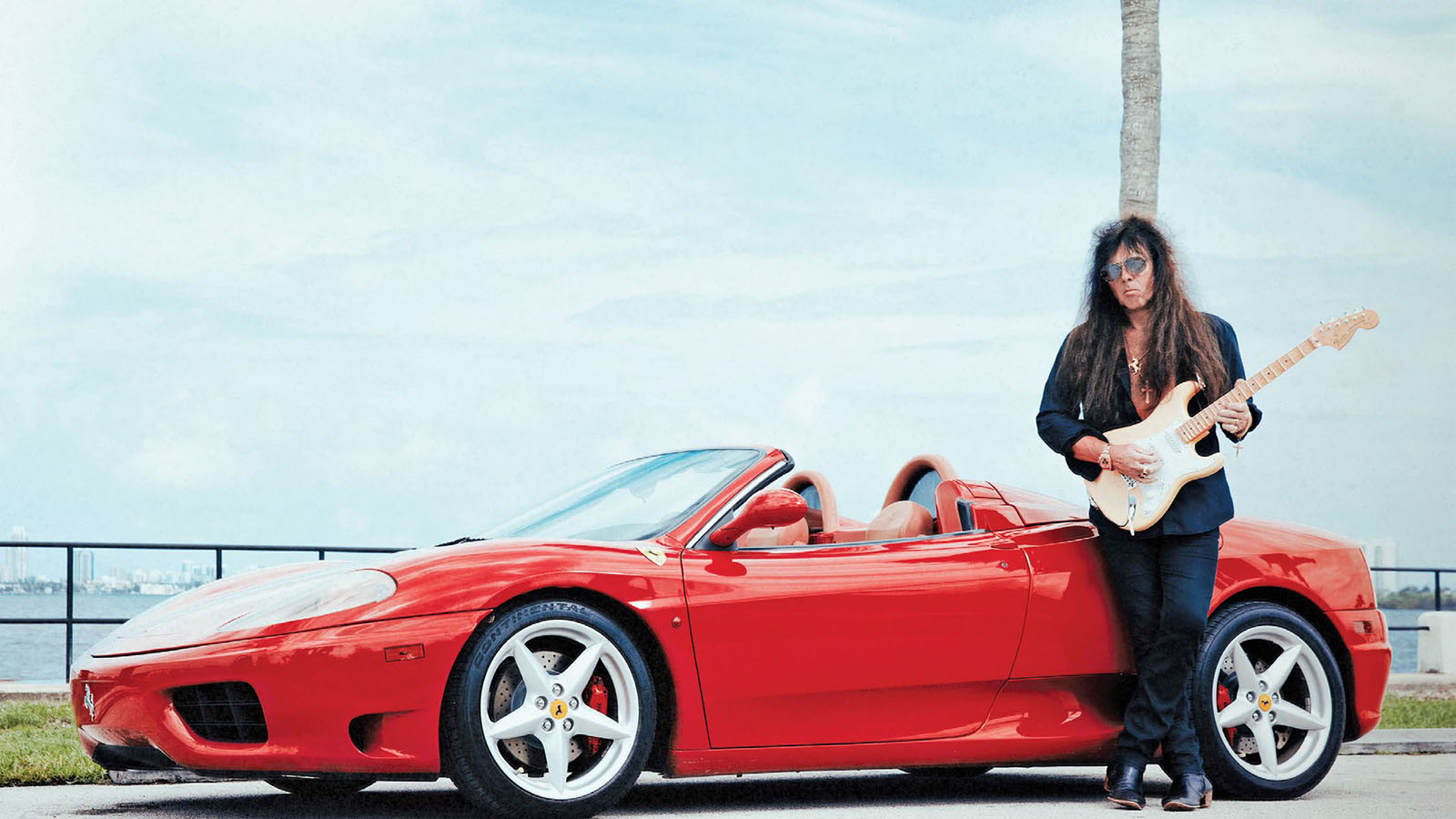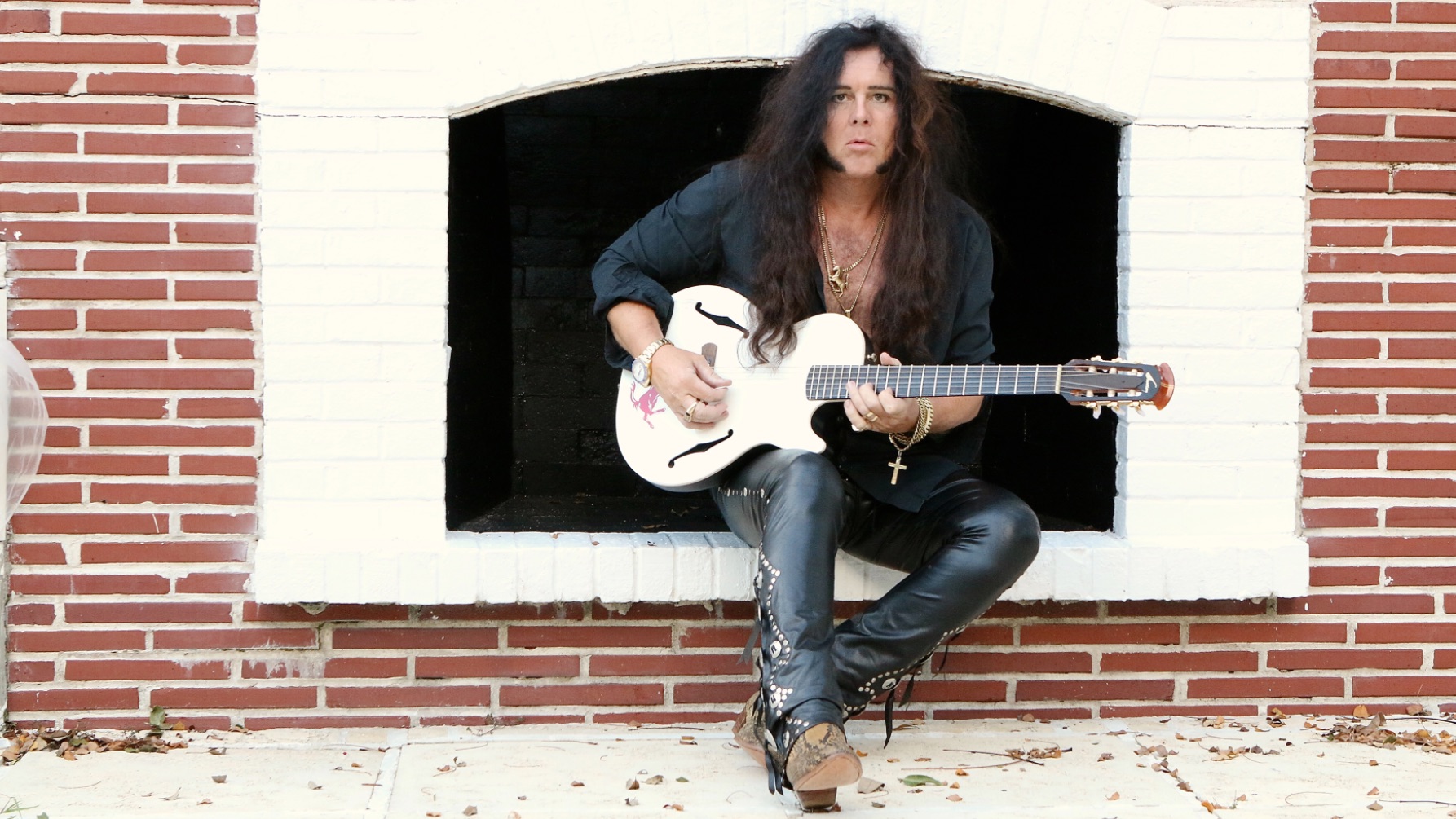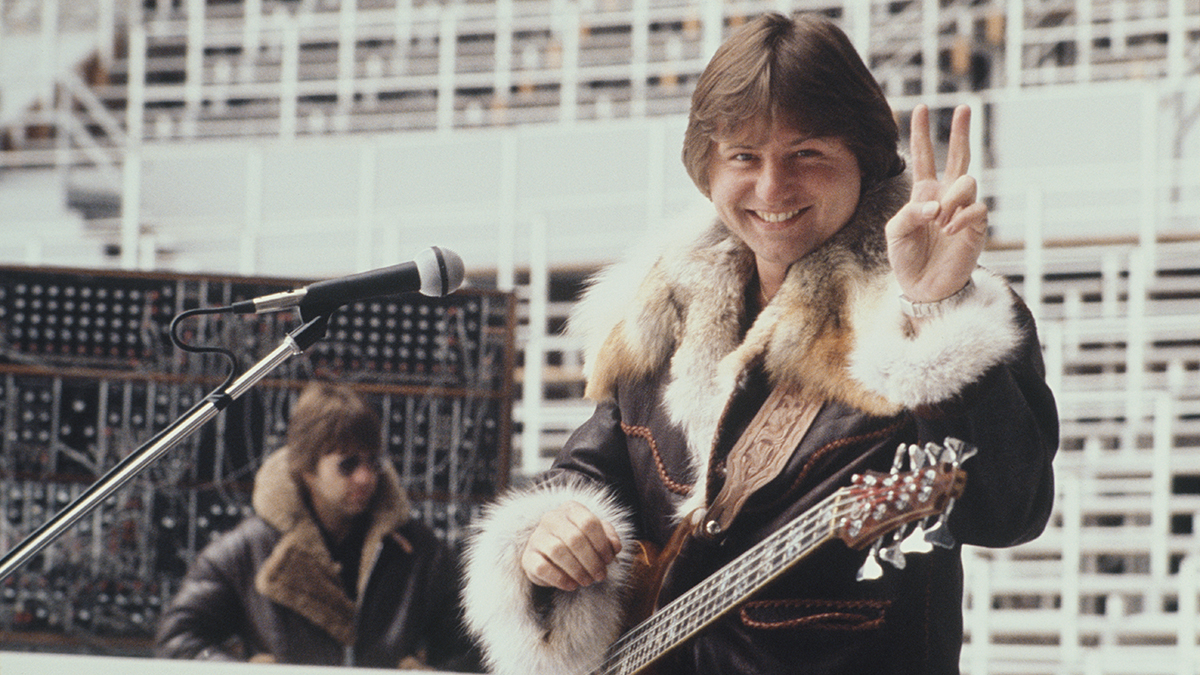Yngwie Malmsteen: “I’ve never practiced in the true meaning of the word. From the first time I picked up a guitar when I was 7, in my head I was a performer”
On this year's Parabellum, everyone’s favorite Ferrari-driving guitar legend tackles all the vocals and instruments (except drums). The result? An Yngwie-on-steroids shred extravaganza

“Did I ever tell you the story about when I first came to America?” Yngwie Malmsteen asks a few minutes into his conversation with Guitar World. The Swedish neoclassical shred legend is calling from – where else? – his Ferrari (“Sun’s up, top’s down”), and as the wind whips by in the background, he unfolds a tale from his past to illuminate how he approached the insane guitar work that characterizes his new album, Parabellum.
“I was a little kid, like 18 or 19, and I was new in the country – I spoke English but I didn’t know some of the terminology,” he begins. “And right away I recorded one album with [Los Angeles-by-way-of-Nashville metal band] Steeler. We did it in one day, in a barn. Then right after that, I did the Alcatrazz album [1983’s No Parole from Rock ‘n’ Roll], and we had a producer there. It was really proper.
“I did a solo, and I’ll never forget it – the producer goes, ‘Oh, yeah, that was really good. Let’s do one more, but a little slower – remember, less is more.’ And I honestly looked at him and went, ‘You mean more is more, right? You made a mistake!’”
Malmsteen lets out a laugh, but he’s also deadly serious. “That wasn’t a joke,” he says. “To me, more is more. And that became my thing.” Indeed it did. To be sure, these very pages have chronicled plenty of exceptionally creative, incredibly proficient and mind-bogglingly speedy guitar shredders over the past four decades. But none of these players is Yngwie Malmsteen.
The 58-year-old virtuoso has always been, and will likely always remain, in a class of his own. And Parabellum will only serve to further cement the Malmsteen legend, and maybe even nudge it a bit further along.
From the unaccompanied shred salvo that kicks off the fierce album opener, Wolves at the Door, to the neoclassical romp Presto Vivace in C# Minor, the majestic note spirals that punctuate the power ballad Eternal Bliss to the pummeling rhythms and lightspeed harmonized lines of Toccata, and the staccato, flamenco-esque acoustic picking of (Fight) the Good Fight to the kitchen-sink six-string indulgences of the eight-minute instrumental closer, Sea of Tranquility, the new record is an Yngwie-on-steroids shred extravaganza, and light years away from its predecessor, the bluesy (though, admittedly, still pretty shreddy) Blue Lightning.
“This time,” Malmsteen says, “I told my record label, ‘I’m going to give you an album that is what I am all about. Prepare yourselves!’” And so, once again, the fury has been unleashed. Much like Malmsteen’s record label, you’ve been warned.
All the latest guitar news, interviews, lessons, reviews, deals and more, direct to your inbox!
Your last album, Blue Lightning, was a bit of a departure from what we’ve come to expect from an Yngwie Malmsteen record. But I’d say that, with Parabellum, we get the “full Yngwie”. You come out with all guns blazing.
“I guess it was all balled up, huh? [Laughs] I can’t explain to you what happened. But I think that, you can listen to shit I did in 1979, 1980, when I was like 16 years old, and, I mean, I don’t think it sounds as good as this, but you could say it’s similar in approach, where there are really no boundaries. There’s no, ‘Oh, maybe that’s a little too much…’ This is what it is, you know?”
What led you to go in this direction?
“With this one I had a full year of doing nothing. Normally I’m touring, but I was in the studio 24/7 for nine months. It was crazy. The only time I remember doing something similar was when I did [1986’s] Trilogy. Because normally you’re on tour, and you cut the drums somewhere and then you do vocals somewhere else, that type of thing. And I don’t say that to mean it’s bad or good.
I felt more intrigued and more challenged and more fascinated with linear patterns and harmonic minors and diminished scales and all that stuff... At the same time, the blues was never a stranger to me
“But what I am saying is that this time I became extremely meticulous about things. And also I was very inspired and very passionate about what I did. I hope that shows. Also, I’ll say it’s been quite a while since I’ve even attempted to do something that would please a certain audience or fit into a certain format or whatever. And that’s true for this record, too.
“I just did what felt natural to me. I didn’t say, “Oh, I’ve got to do this, I’ve got to do that.” What you hear is what you get. That’s me right there on that record. I’m not trying to be something or trying to add something different. It’s a very natural thing, you know?”

Did you not feel that way about Blue Lightning?
“I thought Blue Lightning was really cool. But you know, I was kind of requested to do it. I don’t really take requests, but that one was a request, more or less [from Malmsteen’s label, Mascot Records]. And I said, ‘Yeah, shit, I’m game, why not?’ Some of the songs that I covered, or did my variations on, rather, are songs I’ve always loved. And then I also wrote a bunch of songs that were in the same bluesy vein. And that didn’t feel weird to me because my first initiation with guitar was the blues.
“I got my first guitar when I was five, and my whole family was musical. I would hear jazz and classical and all that stuff. But I didn’t want to know about that – I just wanted to play rock. And blues. Because that was what was cool to me. But the reason I diverted from that to do what now is my style is because I felt extremely limited with those five notes.
“Having said that, I love B.B. King and Angus Young and all those blues players. I think they’re amazing. But for me, I felt more intrigued and more challenged and more fascinated with linear patterns and harmonic minors and diminished scales and all that stuff. That’s why I got away from the blues. At the same time, the blues was never a stranger to me.”
You mentioned the benefit of having a lot of time in the studio for Parabellum. What did that bring to the songs?
“One thing is that once I found a melody or a theme or riff or some crazy arpeggio section, I would record it, and then go, ‘Fuck, this is amazing. Now what am I going to do with it?’ And I could do anything I wanted with it. I can’t tell you how many times I’ve listened to one of my old records and said, ‘Oh, man, I wish I had done it like this.’ This time, I haven’t thought that yet. Maybe I will later but… [Laughs]
“But now it’s like, “No, that’s exactly what I wanted to do.” And that was a luxury of time. I think almost all the songs transformed one way or another, as far as tempos and timing, half time or double time, arrangements. Again, that’s the luxury of time.
“Like, the song Wolves at the Door, I had four different versions of that one. Then I said, ‘I need to put something in the middle.’ So I came up with a G minor arpeggio thing. But after I listened back to it in my car I said, ‘No, I’m starting the song with this!’ So I moved it.
“And Relentless Fury, at one point that was an uptempo song. Or the ballad [Eternal Bliss], I came up with the melodies on guitar, but then I decided to sing them instead. Because the melody will hold itself no matter what you do with it. The more time you can live with something, the more you can change things around, get them exactly how you want.”
I’ve heard you mention that there’s a gunshot on the record.
“[Laughs] Okay. So, back in ’86 I was recording the Trilogy album and I had just discovered sampling and triggering, right? It was a new thing then. I had a Magnum pistol and I wanted to have it triggered by a snare drum, so that every time the drummer hit the snare a gunshot would go off. Like, pow! pow!
“So I brought the gun into the studio, and we put up the mics and we put a big piece of wood there. ‘Okay, roll tape.’ We pull the trigger. Boom! Then we listen back. And all you hear is a little pop. Because the microphones couldn’t handle it. So that was ’86. Now, on this album I tried it again, and we got it.
“I used a Berreta 92, the army pistol. And you can hear it a couple of times. It’s at the beginning of Relentless Fury, and it’s in the middle of Wolves at the Door. And there’s one more, I think, on the last song, Sea of Tranquility. It’s such a cool effect, you know? It’s something I wanted to do 35 years ago, and we finally got it right.”

Let’s talk about some of the other, um, gear on the record. When it comes to guitars and amps, are you basically just using your signature models?
“Yes. It’s a little bit boring because I use my Yngwie Malmsteen [Fender Stratocaster] guitars, I use my Yngwie Malmsteen YJM100 Marshalls, I use my Yngwie Malmsteen [Fender] strings and Yngwie Malmsteen [Seymour Duncan YJM Fury] pickups. Even the acoustic guitar on the record is the Ovation Yngwie [Viper] model. Although for the bass parts I used a Fender through a SansAmp. And I used a Roland [guitar] synthesizer to do all the keyboard parts. All the fast piano parts, that’s all on guitar.”
You’re playing everything except drums.
“Yes. The drums were played by Lawrence Lannerbach. I played all the other instruments. I sang all the vocals. Everything. When you have so much time, that’s when you can go, ‘Hey, let me do 50 vocal overdubs.’”
In the last few years you’ve taken on more and more of the workload yourself. What do you like about that approach?
“It’s a very bizarre thing to try to explain, because in rock ‘n’ roll it’s embedded in people’s minds that it has to be a band playing everything, right? And I’m not saying there’s anything wrong with that – I love the Rolling Stones and Deep Purple and so many bands.
“And 99.9 percent of the songs in those bands usually come about when the guitar player comes up with a riff, the drummer starts playing along with it and finally the singer comes in and starts singing over that. Which is great. But for some reason I tend to approach things more like a writer or a painter would.
“Like, the painter paints the foreground, he paints the background… he doesn’t go, 'Oh, can you do this part for me?' It’s the same with a classical composer, for that matter. And that’s just the way I approach it. Even when I was a little kid, if the drummer wasn’t in the rehearsal room I’d just put the record button on. Like, the demo tape version of Black Star that I did in 1982, that’s me playing drums, bass, keyboards and guitar. So this is nothing new for me.”
Do you still sit down and practice and try to learn new things?
“Well, practice, the true meaning of the word, I’ve never done that. Ever. Because practicing is taking something and repeating it over and over. But from day one, the first time I picked up a guitar when I was seven, in my head I thought I was a performer, you know? I never, ever, ever felt like, ‘Oh yeah, let me play this repetitiously until it’s right.’
“I said, ‘No, I’d better get it right now because I can’t accept being substandard!’ It’s a very strange approach, but that’s what I’ve always thought. And you know, I play quite a lot. If I’m watching TV, I play guitar. And looking back, most of the time I’m touring or recording, so it’s like I’m never not doing it. It’s always active somehow. And if I don’t play for a little bit, I notice.”
I once had a conversation with [former Steeler vocalist] Ron Keel, and he told me that, when you first came to the U.S., you were always playing guitar. He said you would wake up and grab your Strat before you even got out of bed. Then you’d pour a bowl of cereal with one hand and continue playing guitar with the other. Is this an accurate description of Yngwie Malmsteen circa 1983?
“It is. But it’s funny because it’s almost like he’s talking about me when I was even younger. In the 1950s in Sweden, my uncle built a recording studio in a building that was owned by my grandfather. I got to use that facility when I was a kid. I was lucky.
“But it was in the city, and my mom’s house was 45 minutes out by train and a bus. So I would walk to the bus, and while I was waiting for the bus I would take a guitar and start playing. As soon as I was on the bus, I would start playing. When I got to the train I would play guitar on the train. Then I’d change trains and I’d go to my last stop – still playing – and I would walk to my studio and play guitar until it was time to catch the last train back, which was at 2am.
“Then when I got home, I would start playing until I fell asleep. When I woke up in the morning? My guitar was still on me. And the first thing I would do is play. I would do this over and over and over and over.”
When I got home, I would start playing until I fell asleep. When I woke up in the morning? My guitar was still on me. And the first thing I would do is play. I would do this over and over
That’s commitment.
“The most bizarre thing is, I didn’t know why I was doing it. Because it wasn’t like, ‘Oh yeah, if you do this you’re gonna get this reward or that reward.’ It was just some sort of relentless drive to prove something to myself. So I don’t know that I was quite like that by the time I got to the States, but yeah, I was definitely like that. I was always committed.”
- Parabellum is out now via Mascot Label Group.
Rich is the co-author of the best-selling Nöthin' But a Good Time: The Uncensored History of the '80s Hard Rock Explosion. He is also a recording and performing musician, and a former editor of Guitar World magazine and executive editor of Guitar Aficionado magazine. He has authored several additional books, among them Kurt Cobain: Montage of Heck, the companion to the documentary of the same name.

